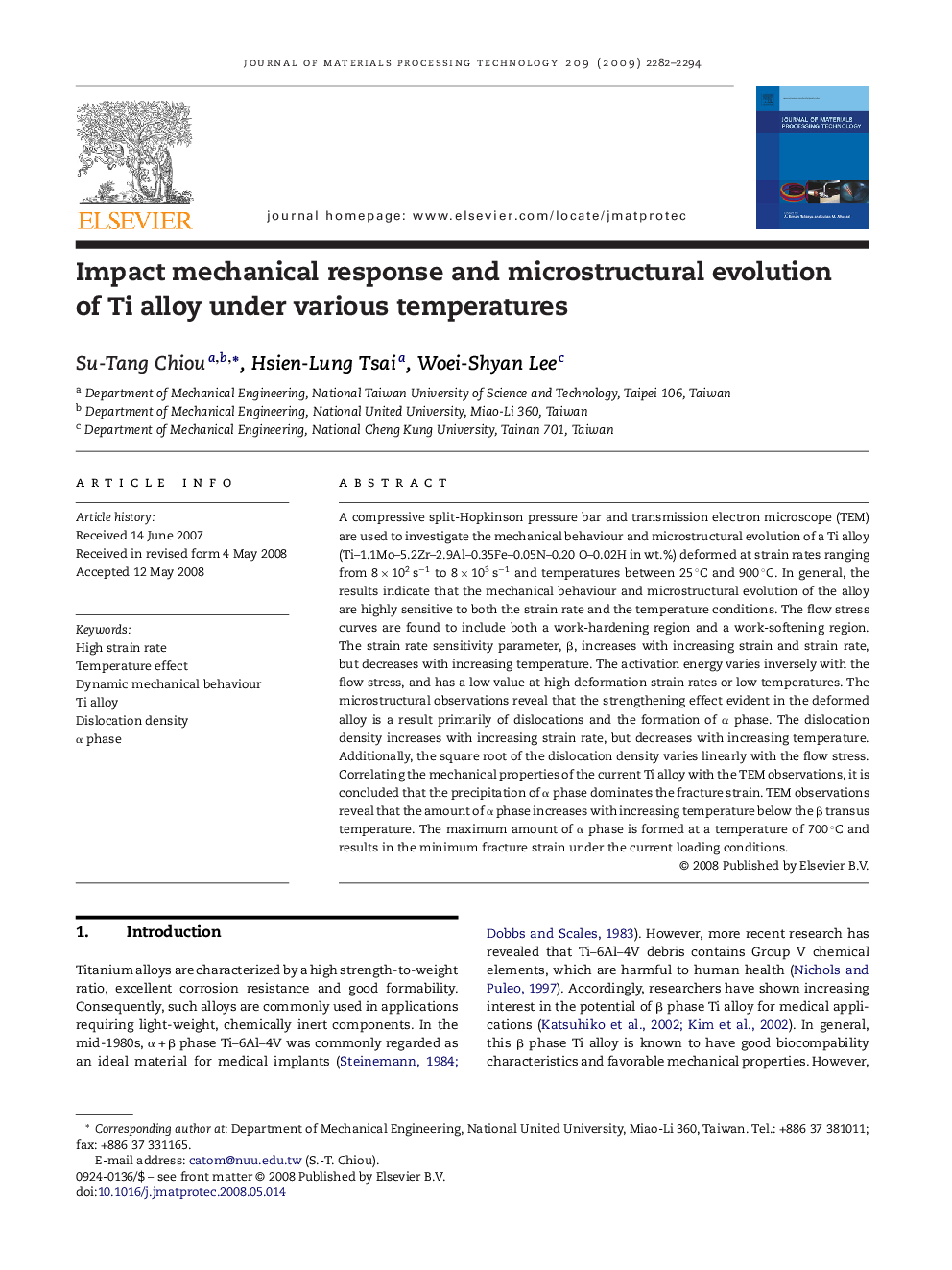| کد مقاله | کد نشریه | سال انتشار | مقاله انگلیسی | نسخه تمام متن |
|---|---|---|---|---|
| 796102 | 902792 | 2009 | 13 صفحه PDF | دانلود رایگان |

A compressive split-Hopkinson pressure bar and transmission electron microscope (TEM) are used to investigate the mechanical behaviour and microstructural evolution of a Ti alloy (Ti–1.1Mo–5.2Zr–2.9Al–0.35Fe–0.05N–0.20 O–0.02H in wt.%) deformed at strain rates ranging from 8 × 102 s−1 to 8 × 103 s−1 and temperatures between 25 °C and 900 °C. In general, the results indicate that the mechanical behaviour and microstructural evolution of the alloy are highly sensitive to both the strain rate and the temperature conditions. The flow stress curves are found to include both a work-hardening region and a work-softening region. The strain rate sensitivity parameter, β, increases with increasing strain and strain rate, but decreases with increasing temperature. The activation energy varies inversely with the flow stress, and has a low value at high deformation strain rates or low temperatures. The microstructural observations reveal that the strengthening effect evident in the deformed alloy is a result primarily of dislocations and the formation of α phase. The dislocation density increases with increasing strain rate, but decreases with increasing temperature. Additionally, the square root of the dislocation density varies linearly with the flow stress. Correlating the mechanical properties of the current Ti alloy with the TEM observations, it is concluded that the precipitation of α phase dominates the fracture strain. TEM observations reveal that the amount of α phase increases with increasing temperature below the β transus temperature. The maximum amount of α phase is formed at a temperature of 700 °C and results in the minimum fracture strain under the current loading conditions.
Journal: Journal of Materials Processing Technology - Volume 209, Issue 5, 1 March 2009, Pages 2282–2294